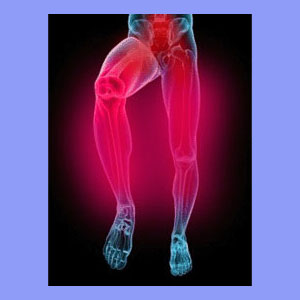
Sciatica leg cramps can be a real torture to endure. Leg cramps are traditionally the result of reduced oxygen supply to the lower body and in the case of sciatica sufferers, there are few exceptions to this rule.
Although blamed on spinal abnormalities in most patients, sciatica has proven itself to sometimes be little more than a chronic or recurrent ischemia syndrome. This helps explain why so many patients endure spasms and cramps as part of their normal sciatica expressions. However, many patients with leg and foot cramps never discover this basic truth and spend years chasing medical care targeting incorrectly identified anatomical sources of pain.
Some neurological issues can also create the ideal circumstances for cramping to occur, so the idea of a purely structural causation is certainly not unheard of. However, these examples are not as common as nonstructural causations for sciatica muscle spasms to occur.
This article will explore the symptomatic expression of cramping in the legs. We will determine the causes of this agonizing event and detail the common scenarios in which cramping typically occurs.
Symptoms of Sciatica Leg Cramps
Leg and foot cramps feel like the muscles have become so tight, almost to the point of injury. The muscular contractions are brutal to endure and feel as if the actual tissues are being torn to pieces. Some people describe their sciatica leg cramps as charley horses, while others describe immense stiffness or tightness in the muscles.
Most of these cramps last a few seconds to a few minutes, but some can endure for hours. The most commonly reported scenario involves sudden and unpredictable onset, with waves of spasm lasting until the position is changed or the cramping subsides on its own. Most patients are basically debilitated during the spasming and suffer fear of a recurrence once it resolves.
Cramps can be slightly uncomfortable and mildly limiting or can be nightmarish and debilitating, depending on many factors. One thing is for sure, sciatica foot and leg cramps usually follow programmed patterns and seem to come on at the least opportune times.
Facts About Leg Cramps
Most sciatica patients suffer from leg and foot cramps at particular times. Many endure this expression when trying to get comfortable lying down in bed or are even woken up at night by throbbing contractions. Still other patients get cramps when sitting for too long or when standing in one place for an extended period of time.
Very few people suffer cramps when exercising normally, although many people with and without sciatica endure cramps when pushing themselves in endurance activities.
Cramps can affect the back or side of the calf, the upper front or rear thigh or any area of the foot. Some patients endure terrible buttocks or lower back cramps, while others may have similar expressions elsewhere in their bodies.
Managing Sciatica Leg Cramps
Sciatica is typically diagnosed as coming from a pinched nerve in the lumbar spinal region. This can and does occur, although it does not typically cause cramps, but instead enacts the usual symptomatic expressions associated with chronic sciatica.
A few soft tissue conditions might also set the right circumstances for cramping to occur. These include some types of muscular imbalances in the legs, as well as localized traumatic injury to the muscles, tendons or ligaments in the legs or feet.
In some instances, the underlying source of cramping is an oxygen deprivation process which may or may not be related to the other sciatica symptoms. This ischemia may be purely anatomically-motivated or may be linked to the mindbody process. In the latter example, this is why so many people experience cramps during times of emotional sensitivity or when repressing troublesome psychological issues.
The subconscious mind regulates the circulation using the autonomic system, so it is easy and invisible for it to limit blood flow to any tissues, at any time, creating those powerful and agonizing contractions that plague so many of us relentlessly. If this experience mirrors your own and you have not found relief from a range of therapy options, I urge you to reconsider the actual source of your pain and read more about regional ischemia. You will be glad you did.
Remember also that oxygen deprivation can occur from various disease processes, as well as potentially dire circulatory concerns. Always be sure to eliminate the possibility of these source processes if you do feel ischemia might be involved in causing your sciatica muscle cramping.
In my own case, I suffered recurrent foot cramps, especially while seated with my legs up. I also got periods of cramping and non-painful spasming of my abdominal muscles, some of my facial muscles and occasionally in my hands or fingers, as well. These occurrences have all been linked to some unspecific neurological dysfunction, which is most likely related to the severe structural issues demonstrated in my cervical spine. However, since I have cured my pain, all of these symptoms have also ended, making life much sweeter.





